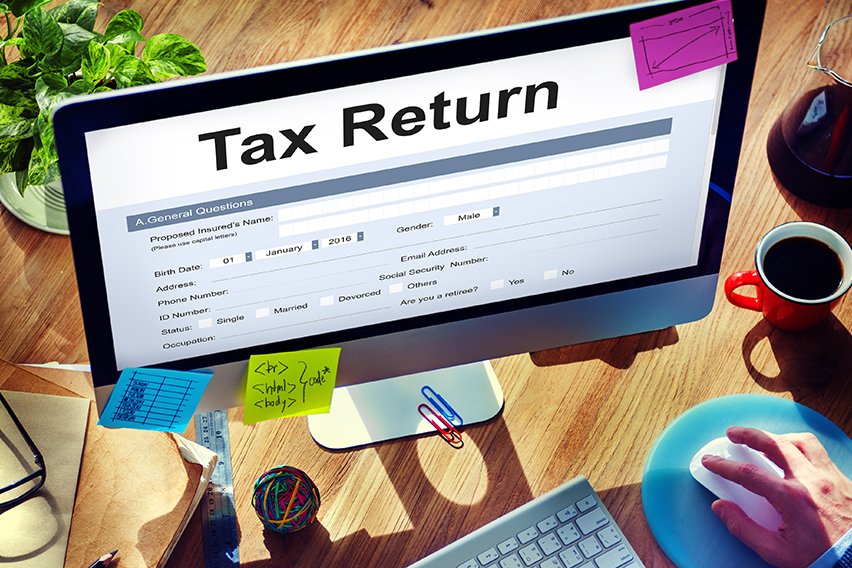Indirect Tax: Definition, Types, and Example

Indirect taxes are a common type of tax where the individual or entity responsible for remitting the tax is not required to pay the tax themselves. Instead, they can shift the cost of the tax onto their customer. Often, indirect taxes are remitted by manufacturers and other sellers but are paid for by the consumer.
Unlike direct taxes, which are levied against individuals or entities, indirect taxes are usually levied on goods and services. If consumers want to avoid paying the tax, they may reduce their consumption of these goods.
Understanding indirect taxes helps businesses set the right prices for their goods and services. It can also help consumers make decisions on which goods and services to purchase. We’ll explore different types of indirect taxes, how they work, and the advantages of indirect taxation.
Key Takeaways
- Indirect taxes are collected by one entity and paid for by another.
- Types of indirect tax include customs tax, sales tax, excise tax, and value-added tax.
- Indirect taxes are usually levied on goods and services.
- Manufacturers and sellers remit indirect taxes and pass the cost to the consumer.
- The advantages of indirect taxes include revenue generation and discouraging harmful consumption.
- Understanding indirect tax compliance helps businesses meet their tax obligations.
Table of Contents
- What Is an Indirect Tax?
- Types of Indirect Tax
- How Does an Indirect Tax Work?
- Indirect Tax Examples
- Indirect Taxes Advantages
- Direct vs. Indirect Tax
- Conclusion
What Is an Indirect Tax?
An indirect tax is a type of tax that is imposed on an entity and then passed down to the consumer. Most indirect taxes are consumption taxes, meaning they are applied to goods and services rather than individuals.
Unlike direct taxes which are applied to individuals or entities, indirect taxes are charged in addition to the net price of goods or services. Manufacturers or vendors are responsible for paying these indirect taxes to the government. To reduce their financial burden, they incorporate the tax into the price of the good or service and pass it down to the consumer.

Types of Indirect Tax
Federal, state, and local governments can impose a variety of indirect taxes to generate revenue. Some types of indirect taxes include:
Sales Tax
There are two kinds of sales tax: direct and indirect. Distinguishing between the two is important for understanding your tax obligations and determining how to effectively price goods.
Direct sales tax is levied on final goods and services and is paid directly by the consumer to the government. This is usually added at the checkout as a percentage of the final bill.
Indirect sales tax includes taxes like value-added tax (VAT) imposed on goods at different stages of the supply chain production process. Manufacturers then incorporate these costs into the price of the good or service.
Use Tax
Use tax is a consumption tax imposed on the use of goods, regardless of where they were purchased. It is imposed on the consumer rather than on the seller or manufacturer.
A use tax is similar to a sales tax with the difference that sales tax is charged by the vendor and remitted to the taxing jurisdiction and use tax is remitted by the customer. In many cases, consumers are exempt from use tax if they can prove that they purchased the goods in that jurisdiction and already paid the sales tax there.
However, if the customer resides in a jurisdiction that has sales tax and purchases something in a jurisdiction without sales tax, they should report and pay the use tax in their resident state.
Value-Added Tax (VAT)
Value-added tax, or VAT, is an indirect tax in which a good is taxed at each stage of the production process based on the value added by that stage.
Each manufacturer or business involved in production receives a tax credit for VAT, however the consumer does not. This means that the consumer ultimately pays for the taxes accumulated through the production process.
The United States does not use a VAT system. Instead, sales tax is used to generate tax income for the government.
Goods and Services Tax (GST)
Goods and services tax, or GST, is a type of value-added tax applied to some goods and services. Like sales tax, it is collected by the manufacturer or seller and remitted to the government. Manufacturers and retailers collect indirect taxes and incorporate the cost into the price of the good or service so that the consumer pays the GST.
The United States does not currently use goods and services tax. Instead, it uses federal, state, and local sales tax on goods and services to generate revenue.
Customs Tax
Customs tax is an indirect tax levied on the import of foreign goods. Often called import or duty tax, it is imposed at the time of import and paid for by the importing party. If a manufacturer or seller imports goods, they may incorporate the cost of the customs tax into the sale price of the product so that the consumer ultimately pays for the tax.
In the US, customs tax is imposed on goods with a value equal to or greater than $800 USD. Some exceptions apply, including for textiles, which are taxed for about $250 USD.
Excise Tax
Excise taxes are a type of sales tax imposed on specific goods or services. These include excise duty on retail goods like cigarettes, alcohol, and soda, as well as activities like betting and some other amusements. Insurance premiums may also be subject to an excise tax.
Excise taxes are typically higher than standard sales tax and may be imposed at the state and local levels.
Gas Tax
The United States levies a federal gas tax of 18.4 cents per gallon on all gasoline purchases. 1 This is a type of fuel excise tax that is imposed on consumers at the time of purchase.
Gas taxes are also typically applied at the state level in addition to the federal gas tax. State gas taxes may be a fixed cent-per-gallon system like the federal tax or they may have a variable rate that fluctuates according to prices and inflation.
Environmental Tax
Environmental taxes are taxes imposed on goods or services that are harmful to the environment. In many cases, environmental taxes take the form of excise duties or taxes levied on goods that use damaging materials like ozone-depleting chemicals.
Federal, state, and local jurisdictions can impose environmental taxes. In addition to the sales tax structure where consumers are taxed for environmentally harmful goods, tax credits can also encourage consumers to purchase environmentally friendly goods and services. An example of this is the Electric Vehicle Tax Credit. 2
Financial Transaction Tax (FTT)
Financial transaction tax, or FTT, is a transaction tax that applies to buying and selling certain types of financial products. FTT is usually levied as a percentage of the value of the asset and must be paid at the time of the transaction.
Federal and state governments can impose an FTT on financial products like stocks and bonds. FTTs are levied on every transaction and are typically paid by the seller. 3
How Does an Indirect Tax Work?
Indirect taxes work by shifting the cost from an individual or entity to another group. For example, many indirect taxes, like the value-added tax, are imposed on manufacturers but passed down to the consumer through final price adjustments. This means that even though the tax is levied against the manufacturer, the consumer pays for it.
Indirect taxes usually result in higher-end prices for the goods and services being taxed. If these higher prices deter consumers from making purchases, indirect taxes can impact the economy by reducing consumption of these goods and services. For example, excise taxes on cigarettes and alcohol may be used to discourage the consumption of these goods.
The government collects revenue through indirect taxes. To reduce the strain on lower-income consumers, jurisdictions may reduce or eliminate indirect taxes on essential goods like groceries and only levy these taxes on things like entertainment or luxury items.
Indirect Tax Examples
Here are some examples of indirect taxes in the US and how they are applied.
Customs Tax
A common type of indirect tax is customs tax. This is an import tax levied at the time of import and paid by the importing party. If a business imports goods for resale, it adds the customs tax to the price of the goods, therefore transferring the tax to the consumer.
Let’s say that Company A imports computers for resale in the US. Each computer costs $1,000 and is taxed at 4%. This means the company must pay $40 in customs tax for each computer imported. Company A aims to make a profit of $500 on each computer so they will charge $1,540. Although Company A was the one to pay the customs tax at the time of import, they shifted that tax to the consumer so it would not impact their profit margin.
Excise Tax
Excise taxes are a type of sales tax imposed on specific goods and services, often on a per-unit basis. For example, Company B sells cigarettes and must remit 20 cents of taxes on each pack sold. If they originally sold a pack of cigarettes for $5.00, after the tax they decided to charge $5.20 to cover the excise tax.
Indirect Taxes Advantages
Indirect taxes have several advantages, including being an effective method of revenue generation and encouraging consumers to make responsible purchase choices.
Ease of Collection
Compared to taxes like income taxes where taxpayers are required to complete a time-consuming filing process, indirect taxes are easily collected at the point of sale. This reduces the time and cost required by tax authorities to collect taxes, making it easier for the government to generate revenue and reducing the effort burden on consumers.
Often Applied to Optional Goods and Services
Many indirect taxes, like excise taxes, are applied to optional or luxury goods. This includes things like betting and entertainment as well as products like alcoholic beverages and cigarettes. Since these are considered non-essential goods, consumers can avoid the tax by choosing not to purchase these items.
Can Discourage Harmful Products
Excise taxes and environmental taxes are often used to discourage the consumption of products that are harmful to consumers or the environment. Excise taxes are often applied to goods that are hazardous to health, like cigarettes, while environmental taxes are applied to goods and services that contain damaging chemicals or emit high emissions. Applying indirect taxes can encourage consumers to shift away from these goods towards healthier and more environmentally friendly purchases.
Direct vs. Indirect Tax
Direct taxation is imposed on an individual or entity and paid for by that entity. In comparison, indirect taxes are paid by someone other than the individual or entity upon whom they are imposed. Direct and indirect taxes both generate government tax revenue, but they are levied and collected differently.
The most common example of a direct tax is federal income tax. This is a tax levied against an individual based on a percentage of their earnings which they must pay each year. Income taxes may be imposed at the federal, state, and local levels.
Indirect taxes are usually levied upon goods and services, and in most cases, the seller or manufacturer is responsible for remitting these taxes to the government. However, they are not required to pay the taxes themselves—they can pass the cost of the tax down to someone else, usually the consumer. For example, when the government levies a tax on the sale of alcohol, the seller can incorporate the tax cost into the item’s price so the consumer ultimately pays the tax.

Conclusion
Indirect taxes are imposed on a certain group but paid for by another. Manufacturers and sellers are usually responsible for remitting indirect taxes but they pass the cost down to the consumer. Common types of indirect taxes include sales tax, excise tax, customs tax, and environmental tax.
Setting the right price for your goods and services ensures that you cover the cost of indirect taxes while still generating profit. FreshBooks financial reporting software generates ready-made reports and helps you organize your revenue and expenses so you can track profits and set the perfect price. Try FreshBooks free to discover how streamlined financial reporting can help you grow your business.
Article Sources
- Variable Rate Gas Taxes, National Conference of State Legislatures
- What is Environmental Taxation?, Vermont Law & Graduate School
- Financial Transaction Tax (FTT), Tax Foundation
About the author
Sandra Habiger is a Chartered Professional Accountant with a Bachelor’s Degree in Business Administration from the University of Washington. Sandra’s areas of focus include advising real estate agents, brokers, and investors. She supports small businesses in growing to their first six figures and beyond. Alongside her accounting practice, Sandra is a Money and Life Coach for women in business.
RELATED ARTICLES


 Freelancer Taxes: Ultimate Guide for Tax Filling & Smart Savings
Freelancer Taxes: Ultimate Guide for Tax Filling & Smart Savings Self-Employed Health Insurance Deduction
Self-Employed Health Insurance Deduction How Far Back Can IRS Audit? Everything You Need to Know
How Far Back Can IRS Audit? Everything You Need to Know Itemized Deductions: What They Mean and How To Claim
Itemized Deductions: What They Mean and How To Claim SALT Deduction: How to Write Off State And Local Tax
SALT Deduction: How to Write Off State And Local Tax Federal Solar Tax Credit 2025: What It Is & How Does It Work
Federal Solar Tax Credit 2025: What It Is & How Does It Work